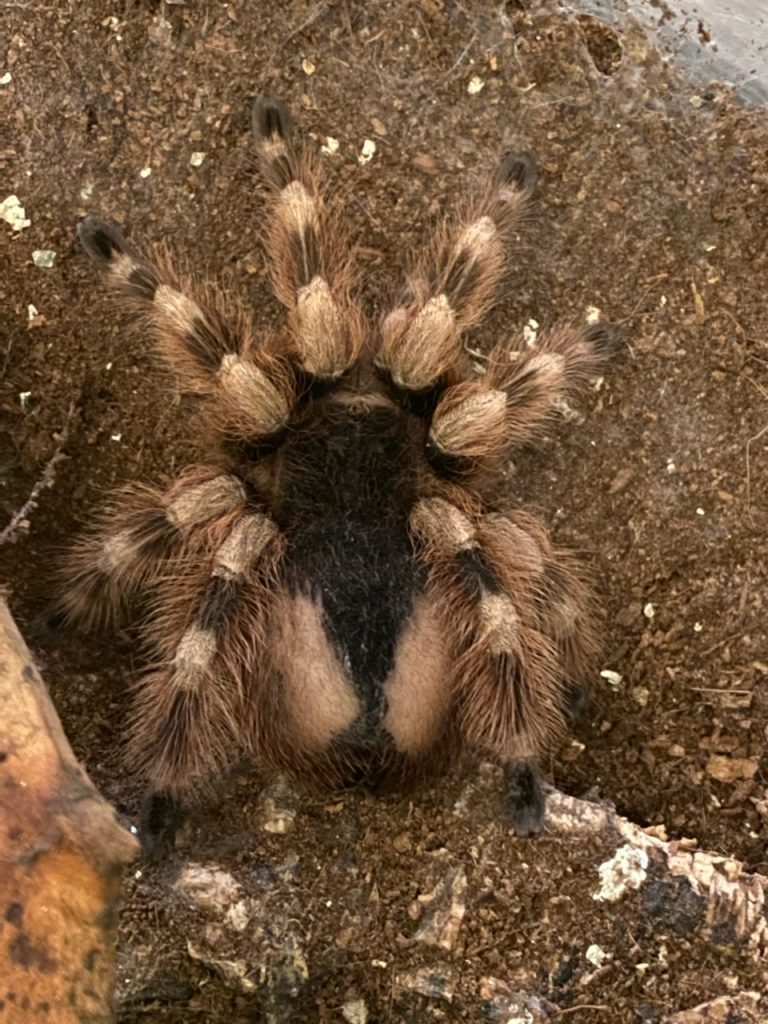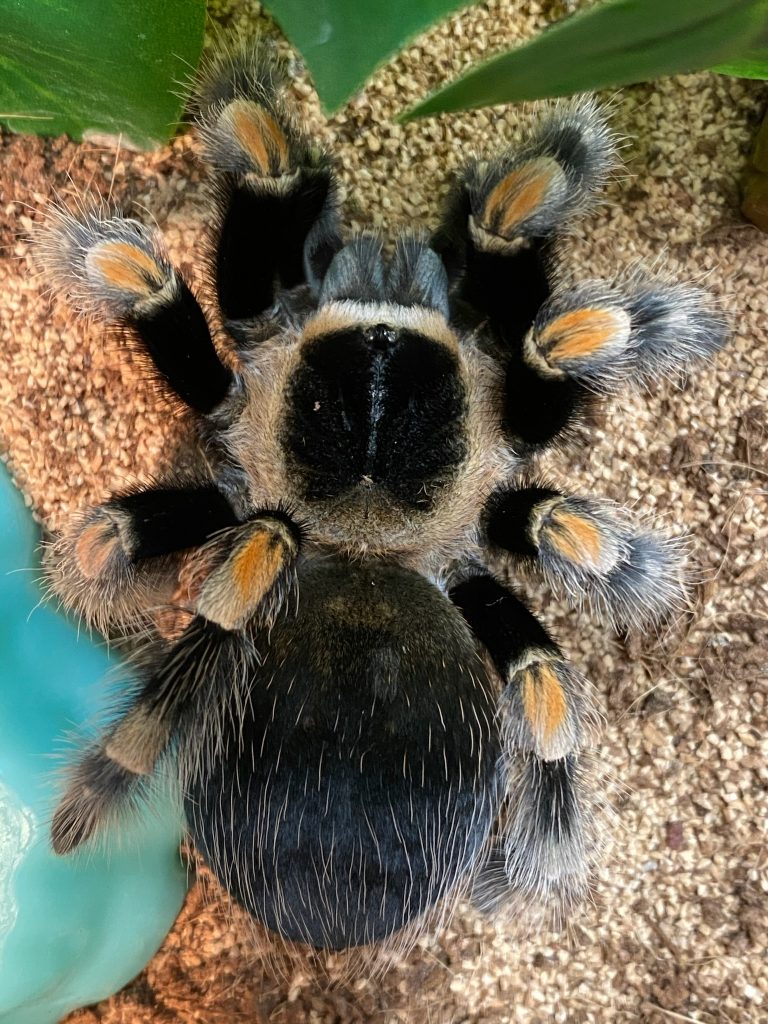What’s Up with Tarantulas Having Bald Butts?

(Nhandu coloratovillosus)
shows off two bald patches on abdomen where urticating hairs have been flicked
A lot of animals have defense mechanisms; opossums play dead, lizards lose tails, even humans have fight or flight reactions to avoid danger. When you think of a tarantula’s defense mechanisms your first thought is probably their bites and/or venom. However, they also have urticating hairs located on their abdomen. Urticating hairs are thorny bristles that can be flicked by the back legs that can then lodge themselves in the attacker’s skin and cause an allergic reaction. One way these hairs are used is as a passive defense. Tarantulas place the urticating hairs in the egg sac to protect it from other arthropods looking for a snack. Urticating hairs are also used as an active defense against predators. When used for active defense, the tarantula uses its back legs to flick the hairs from the abdomen into the air thus forming a flying cloud of ouchie! If these predators are unlucky and any of the hairs make contact with their skin it can cause an uncomfortable rash. This rash is meant to deter predators from eating the tarantula. When tarantulas molt to grow in size the lost urticating hairs are replaced along with any legs that may have been lost!

(Brachypelma smithi)
has all urticating hairs intact
While some of the tarantulas have a calmer temperament and simply do not flick the hairs as often, there are also some that do not have any hairs to flick. Tarantulas can be divided into two groups; old world and new world. This classification refers to the parts of the world the tarantulas come from. Old world being from Asia, Australia, Africa, and Europe, and the new world being North and South America. The classification also refers to a few other characteristics, including those urticating hairs we talked about. Almost all new world tarantulas have urticating hairs and old world tarantulas do not.
To learn more about our tarantulas, join us for a free event called, “Creature Features” led by Naturalist Jorge Garcia on December 28th 2024 at 2pm. Register here and bring the kids!



